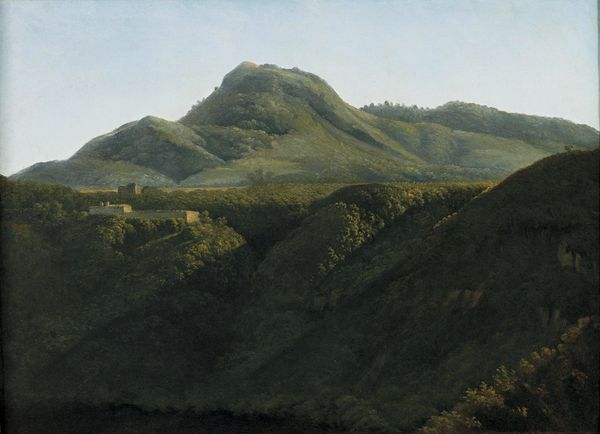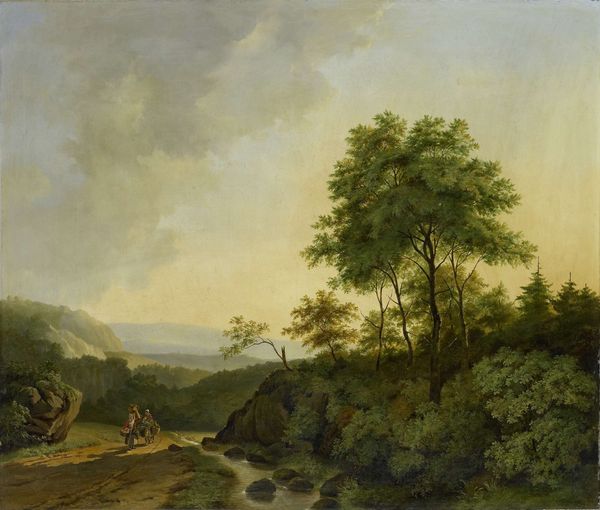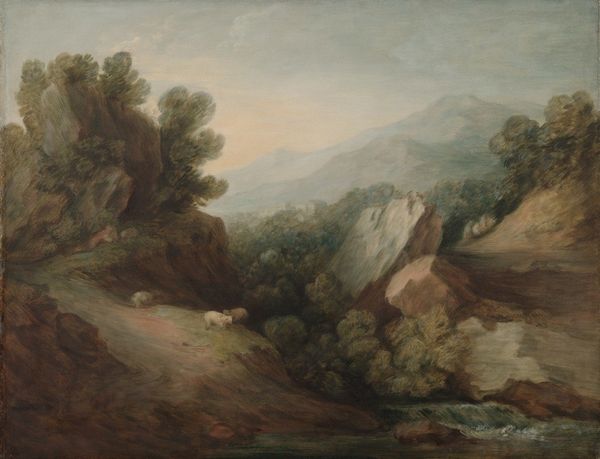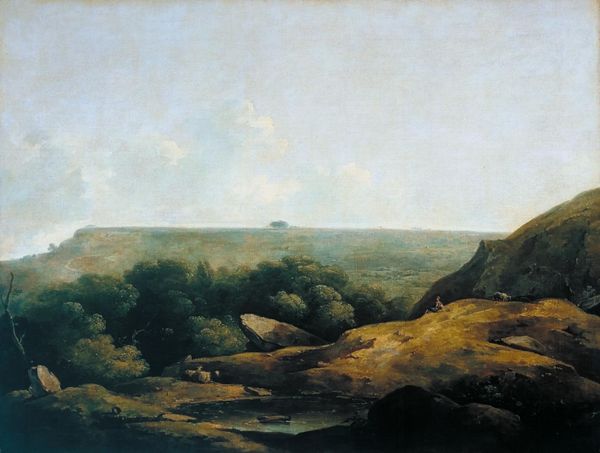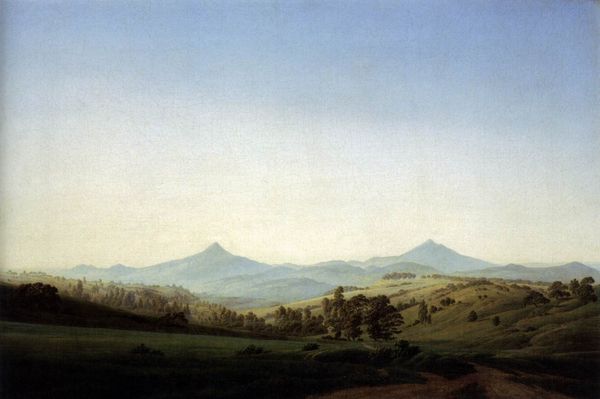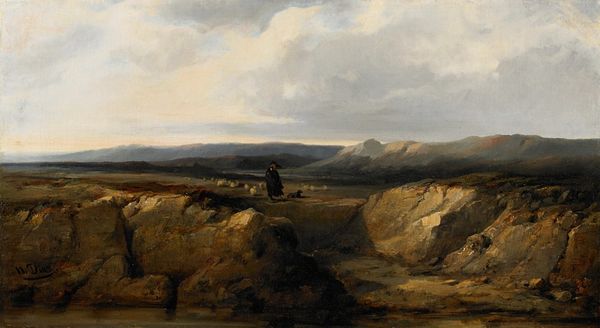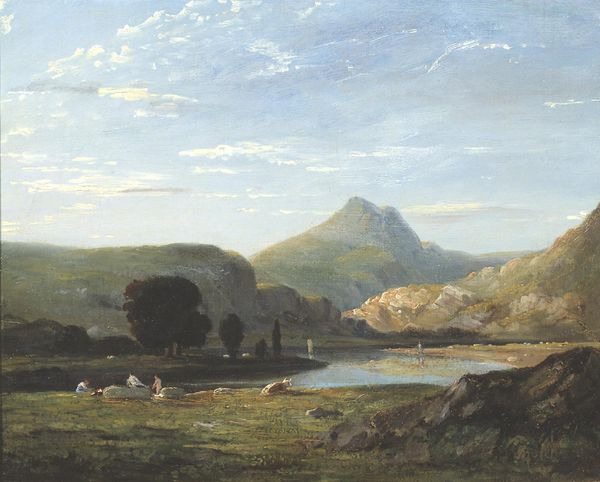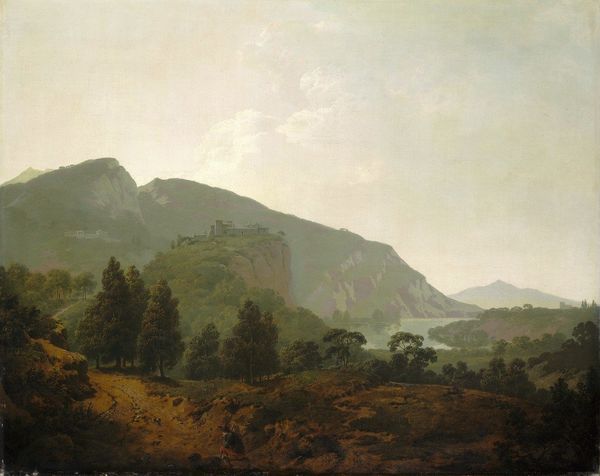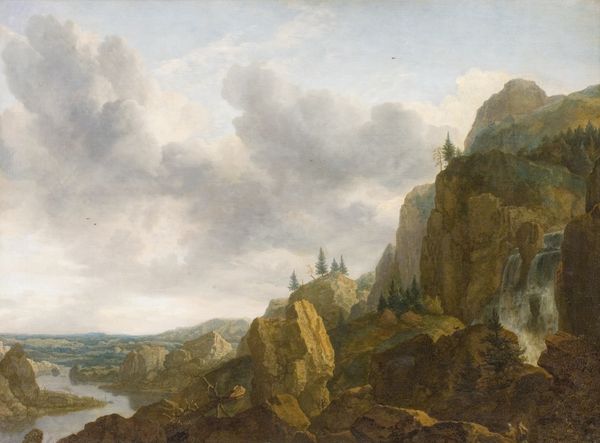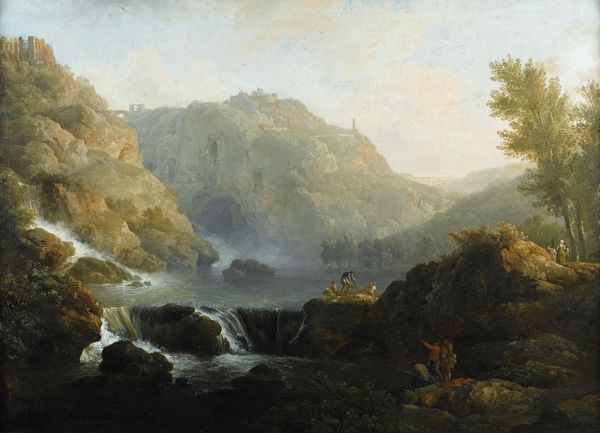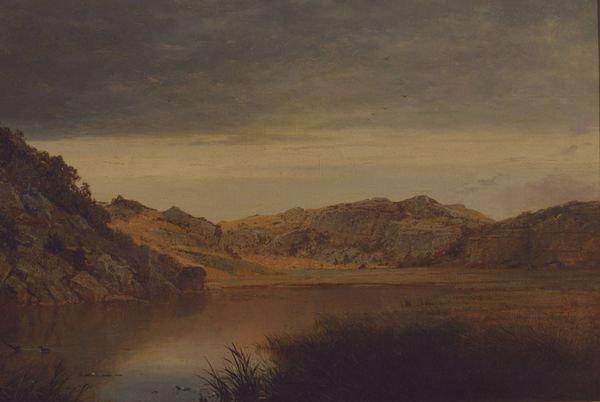
painting, plein-air, oil-paint
#
painting
#
plein-air
#
oil-paint
#
landscape
#
oil painting
#
romanticism
#
mountain
#
realism
Copyright: Public domain
Editor: Here we have Jean-Joseph-Xavier Bidauld's "Monte Cavo Du Lac D'albano," an oil painting rendered *en plein air*. I find the landscape quite calming, yet there's also a sense of... ownership in how the land is presented. What are your thoughts, from a historical context? Curator: That's an insightful observation! "Monte Cavo Du Lac D'albano", reflects a particularly interesting moment in the development of landscape painting and its entanglement with societal power structures. Bidauld was working at a time when access to land and its representation were fraught with social and political significance. Notice how the composition is meticulously organized? This isn't just a faithful rendering of nature; it’s a carefully constructed view, that evokes themes of the sublime but can also convey a subtle claim to territory and dominion. Does this calculated composition invite viewers to see themselves as possessors, rather than mere observers? Editor: I see what you mean. The ordered structure doesn't just show beauty, but a specific type of beauty, aligned with power. Was this typical of the period? Curator: Very much so. The late 18th and early 19th centuries were marked by political upheaval. Landscape paintings, in their apparent neutrality, could actually reinforce the status quo by idealizing the land owned by the elite. This "neutrality" also conveniently excluded the labor and struggles of those who worked the land but did not own it, namely the peasants. The "picturesque" qualities that were popular often masked deeper inequalities. Editor: So it's not just about what's *in* the painting, but also what's *left out* and whose perspective is prioritized? Curator: Precisely. Think about who this painting was *for*. Its commissioners would have been from the upper echelons of society, viewing this artwork within domestic settings. It serves to validate and naturalize their status and their privilege of viewing and owning such serene scenery. What do you make of Bidauld’s choice of plein-air technique? How does this choice speak to the painting’s narrative? Editor: Knowing all this shifts my view quite significantly. I initially saw tranquility, but now I see a composed assertion of power subtly embedded in this beautiful landscape. Curator: Exactly. And questioning those initial assumptions is precisely how we engage more deeply with art and its role in reflecting, and also shaping, our world.
Comments
No comments
Be the first to comment and join the conversation on the ultimate creative platform.
